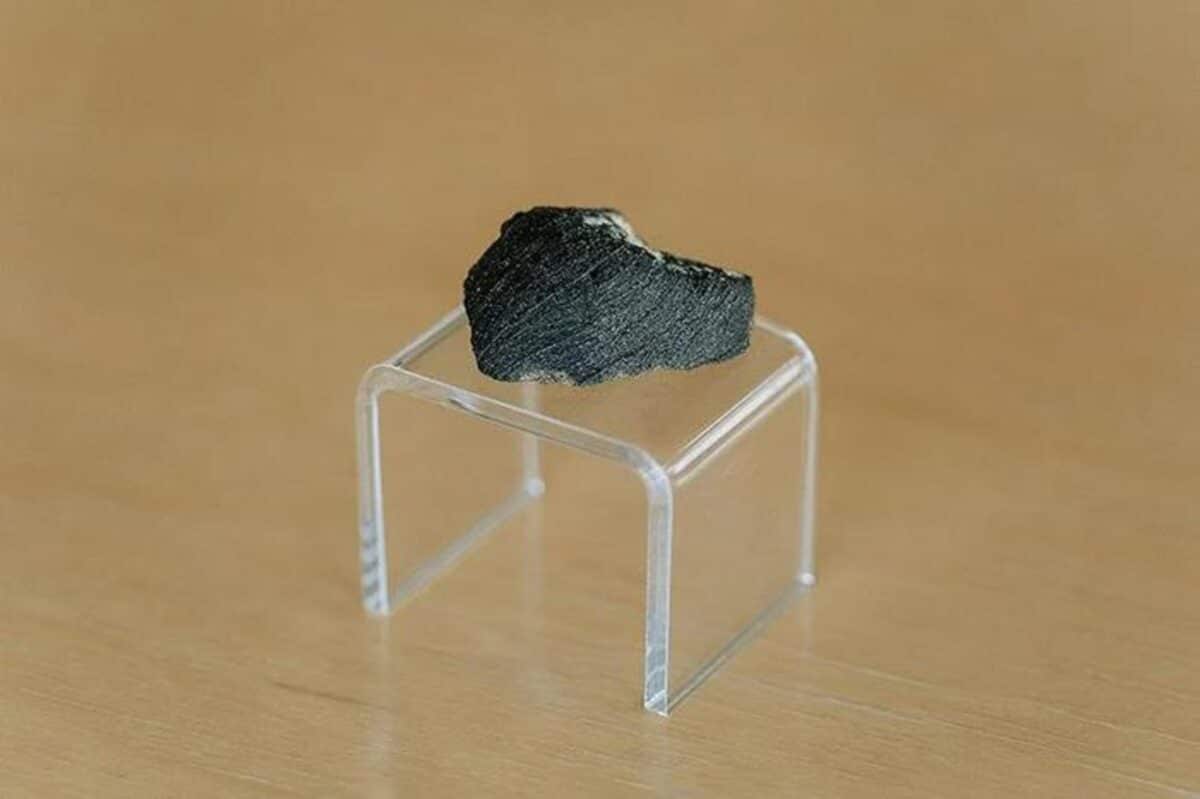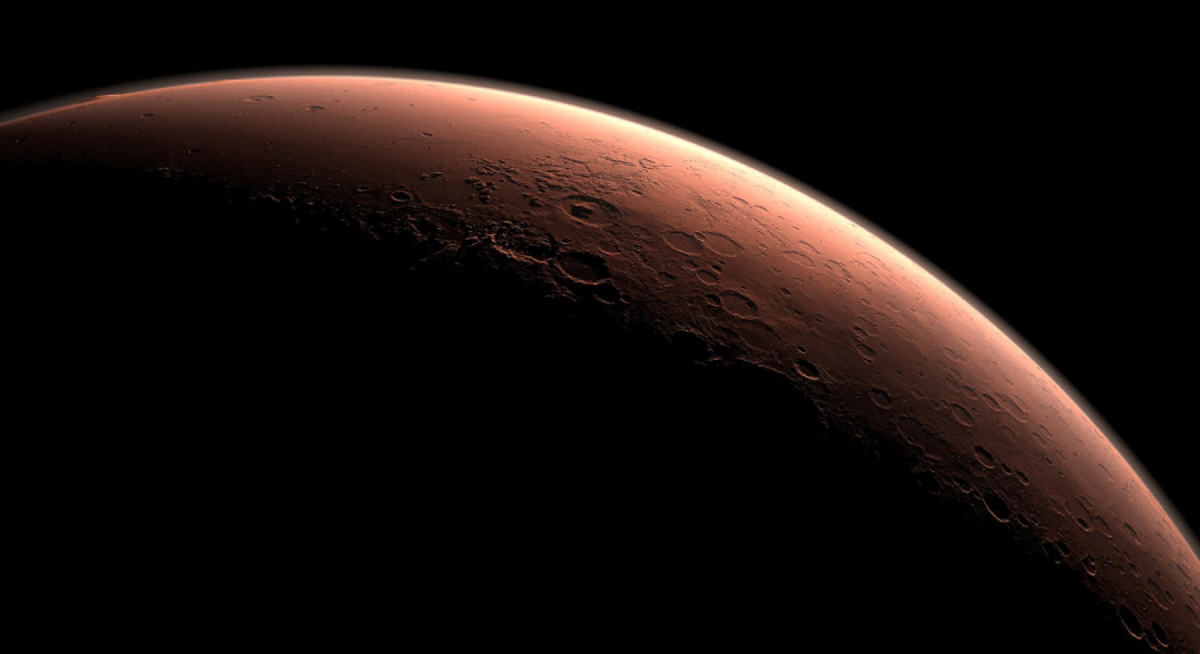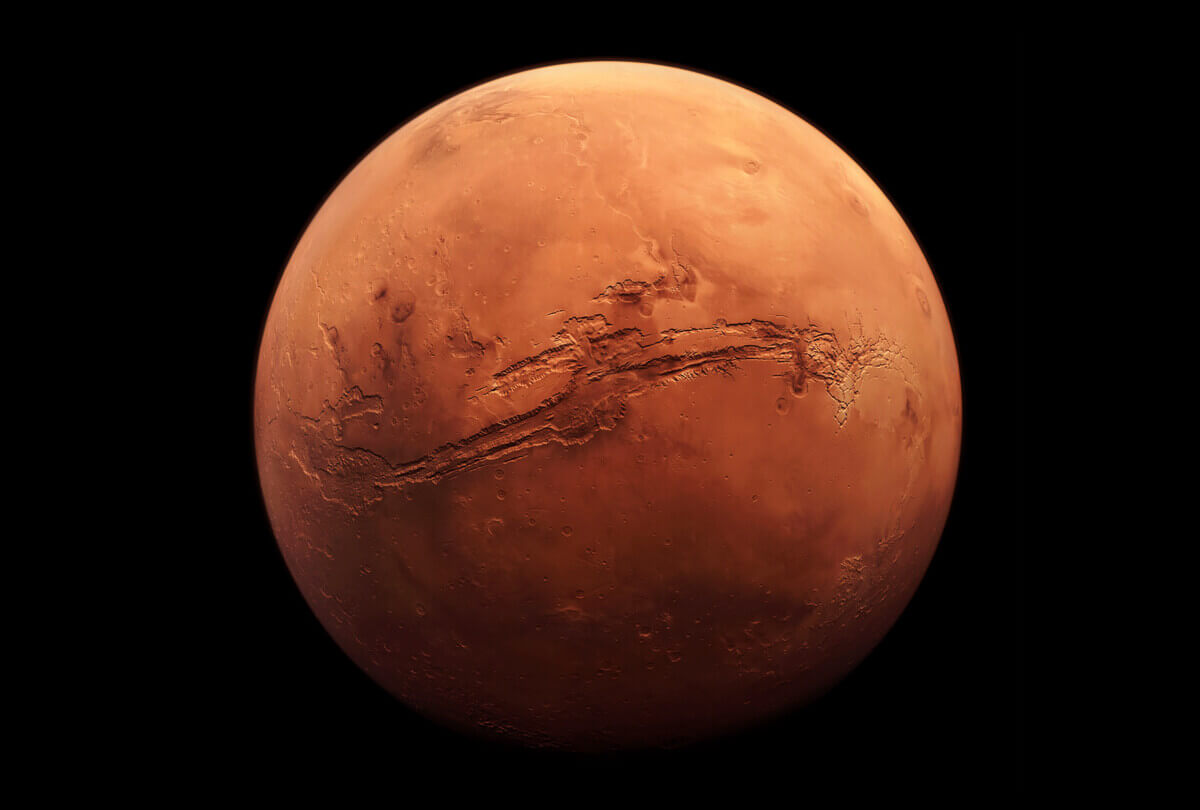
An asteroid struck Mars 11 million years ago and sent pieces of the red planet hurtling through space. One of these chunks of Mars eventually crashed into the Earth somewhere near Purdue and is one of the few meteorites that can be traced directly to Mars. This meteorite was rediscovered in a drawer at Purdue University in 1931 and therefore named the Lafayette Meteorite. During early investigations of the Lafayette Meteorite, scientists discovered that it had interacted with liquid water while on Mars. Scientists have long wondered when that interaction with liquid water took place. An international collaboration of scientists including two from Purdue University’s College of Science have recently determined the age of the minerals in the Lafayette Meteorite that formed when there was liquid water. The team has published its findings in Geochemical Perspective Letters. (Credit: Purdue University)
In a nutshell
- Liquid water existed on Mars far more recently than expected: A precise new analysis of the Lafayette meteorite shows that water-altered minerals formed just 742 million years ago, during a time many believed the planet was dry and frozen.
- Mars may still experience brief bursts of habitability: Scientists believe the water likely came from melting subsurface ice triggered by volcanic heat, suggesting Mars had, and may still have occasional, localized hydrological activity.
- This dating breakthrough opens new doors in the search for life: The team used a novel argon isotope technique that can now be applied to other planetary materials, helping researchers pinpoint when and where liquid water, and potentially life, may have existed elsewhere in the solar system.
WEST LAFAYETTE, Ind. — Was there ever water on Mars? Scientists have pinpointed when water last flowed through Martian rocks with unprecedented precision: a mere 742 million years ago. This revelation from a chunk of Mars that fell to Earth suggests our celestial neighbor maintained liquid water far more recently than previously thought.
The meteorite, named Lafayette, contains minerals that could only have formed through interaction with liquid water, a clue that Mars wasn’t always the barren desert planet we see today. These water-created minerals tell a story of brief but significant hydrological activity during Mars’s Amazonian period when most scientists believed the planet was cold, dry, and largely inhospitable. Now, new research published in Geochemical Perspectives Letters explains how researchers found out when the meteorite actually came in contact with water.
“Dating these minerals can, therefore, tell us when there was liquid water at or near the surface of Mars in the planet’s geologic past,” says lead author Marissa Tremblay from Purdue University, in a statement.
Mars’s recent geological period (the Amazonian, spanning from 2.9 billion years ago to the present) was thought to be characterized by extremely limited water activity. The evidence suggests that while Mars’s surface has been mostly dry for billions of years, pockets of liquid water could have existed beneath the surface much more recently than we imagined.

Lafayette, a small 0.8 kg meteorite, is part of the nakhlite group, Martian rocks ejected during an impact about 11 million years ago that eventually made their way to Earth. What makes Lafayette special is the presence of reddish-brown veins called “iddingsite” running through its olivine crystals. These minerals contain potassium and are formed only through reaction with liquid water.
The meteorite has an unusual history on Earth. It was rediscovered in a drawer at Purdue University in 1931, though how it got there remains a mystery. Its unique mineral composition and chemical signatures, which match those of Mars, confirmed it came from the red planet.
To pinpoint the age of these water-formed minerals, researchers used a sophisticated dating technique called 40Ar/39Ar geochronology. The team carefully extracted tiny samples of iddingsite from the meteorite and sealed them in glass capsules before bombarding them with neutrons. By measuring the ratio of different argon isotopes released when the samples were heated, they determined that the water-formed minerals crystallized 742 million years ago, give or take 15 million years.
This new date is far more precise than previous estimates, which ranged from 670 million years to as recent as zero years ago. It also reveals that the original igneous rock formed about 1.3 billion years ago, then approximately 580 million years later, liquid water flowed through it, creating the telltale minerals.

“We do not think there was abundant liquid water on the surface of Mars at this time,” says Tremblay. “Instead, we think the water came from the melting of nearby subsurface ice called permafrost, and that the permafrost melting was caused by magmatic activity that still occurs periodically on Mars to the present day.”
Tremblay explains that several events, like the impact that blasted Lafayette off Mars, its 11-million-year journey through space, or the heat from entering Earth’s atmosphere, could have potentially altered its age. However, the team was able to confirm that none of these processes affected the age of the meteorite’s water-related changes.
The findings align with what we know about Mars’s volcanic history. While major volcanic activity had declined by the Amazonian period, the planet still experienced episodic eruptions in regions like Tharsis and Elysium, precisely where the nakhlite meteorites likely originated.
This timeline revision forces scientists to reconsider the potential for microbial life on Mars. If liquid water existed just 742 million years ago, a blink of an eye in geological terms, could isolated pockets of habitability have persisted far longer than we thought?
Although the water activity was likely occasional and short-lived, it wasn’t unusual. This pattern of occasional, localized water activity might have repeatedly created habitable niches throughout Mars’s recent history, potentially allowing life to persist in isolated pockets long after the planet’s surface became uninhabitable.
This technique now provides a reliable method for tracking water activity across our solar system, which is crucial information as we continue searching for potential habitats for life beyond Earth. Even in Mars’s recent geological history, the ingredients for life weren’t completely absent.
Paper Summary
Methodology
Researchers analyzed a Martian meteorite called Lafayette using the 40Ar/39Ar dating technique. They physically separated iddingsite (water-altered minerals) from the host olivine in the meteorite, then encapsulated twelve ~1 μg samples in sealed quartz glass capsules before neutron irradiation. This micro-encapsulation technique was crucial to prevent the loss of recoiled isotopes from the fine-grained material. They measured argon isotopes in two stages: first capturing any gases that recoiled into the glass during irradiation, then laser-heating the samples to release remaining gases. The combined measurements provided precise age data for when water altered the original rock.
Results
The 40Ar/39Ar measurements yielded a precise age of 741.8 ± 15.0/15.2 million years for the water-formed iddingsite minerals in Lafayette. All twelve samples showed consistent ages with no statistically significant variations (MSWD of 1.2, p-value of 0.3). This date is approximately 580 million years after the original igneous rock formed (around 1.3 billion years ago), indicating a significant gap between rock formation and water alteration. The researchers concluded that localized magmatic activity most likely melted subsurface permafrost, creating temporary water flows that altered the rock, rather than impact-related heating or other processes.
Limitations
The study considered potential issues like diffusive loss of argon from the samples, which could have made the minerals appear younger than their true age. Through extensive modeling and consideration of Lafayette’s thermal history, researchers determined that significant argon loss was highly unlikely based on what’s known about the meteorite’s journey from Mars to Earth. They couldn’t completely rule out the possibility of a third impact event at 742 million years ago that might have caused the water activity, though they considered it unlikely that three major impacts would occur at the same location.
Funding and Disclosures
The research was funded by the UK Science and Technology Facilities Council (grants ST/H002472/1 and ST/H002960/1). The Lafayette sample (USNM 1505) was obtained from the Smithsonian Institution, sourced from an interior core more than 20 cm from the fusion crust to minimize terrestrial contamination. The research also involved an international collaboration of scientists from the Scottish Universities Environmental Research Centre, the University of St Andrews, the University of Glasgow, the University of Bristol, and the Natural History Museum in London.
Publication Information
The paper “Dating recent aqueous activity on Mars” by M.M. Tremblay, D.F. Mark, D.N. Barfod, B.E. Cohen, R.B. Ickert, M.R. Lee, T. Tomkinson, and C.L. Smith was published in Geochemical Perspectives Letters (Volume 32, pages 58-62) in November 2024. The research was received on August 10, 2024, accepted on October 15, 2024, and published on November 6, 2024.







